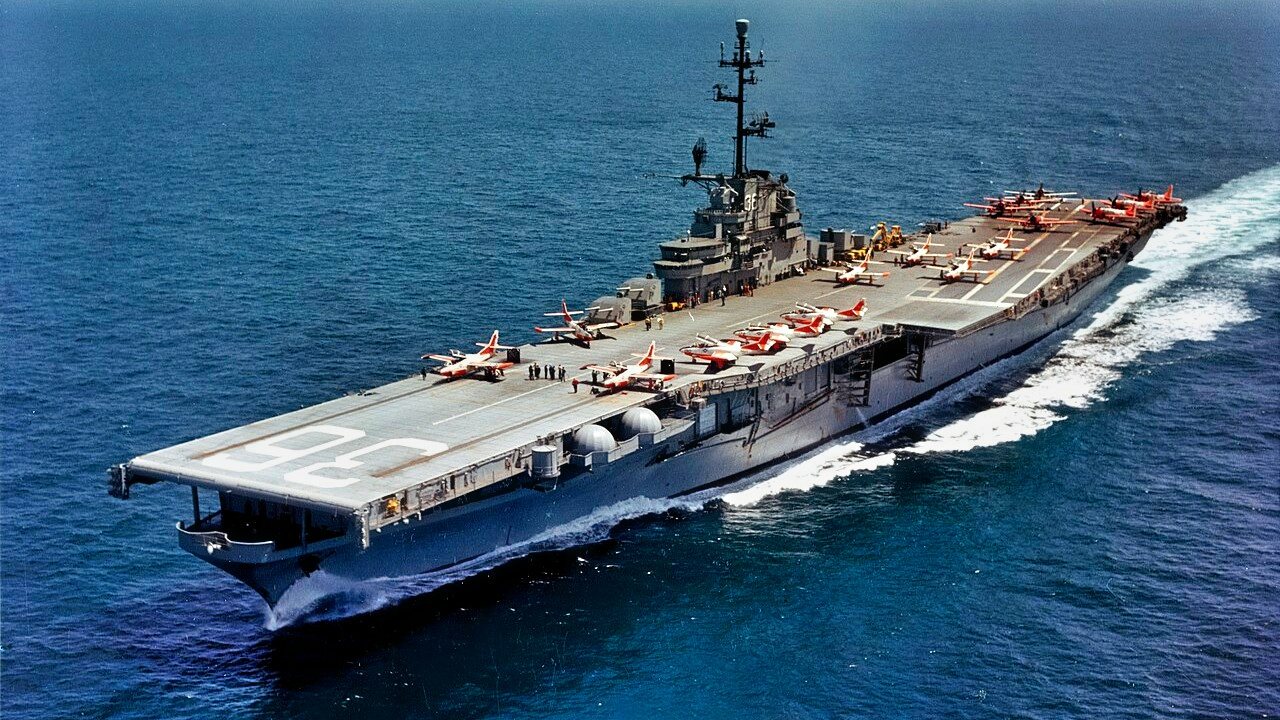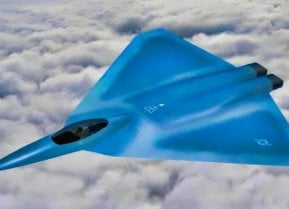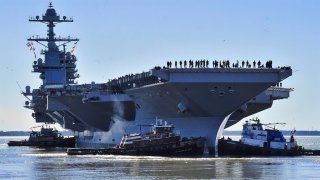DF-26B: China's Missile Built to Sink Navy Aircraft Carriers in a War
The mobile launcher can carry a 1,200 to 1,800 kg nuclear or conventional warhead, and as it could directly strike a target such as the U.S. territory of Guam in the event of war it should be seen as a formidable weapon. More ominously, the DF-26B has been described as a carrier killer due to how it could be used to target the U.S. Navy’s fleet of Nimitz- and Ford-class nuclear-powered supercarriers.
China's DF-26B Carrier Killer Missile: A Real Threat to the U.S. Navy? The People's Liberation Army Navy (PLAN) is now the largest naval force in the world, yet many of its vessels can't operate far from China's home waters. It currently has two aircraft carriers in service, while a third was launched last year, still trailing the U.S. Navy's eleven nuclear-powered carriers.

Yet, even as Beijing has ambitious plans to build more carriers, it would seek to "level" the playing field in a conflict with the U.S. by sinking its flattops – and it has developed the weapons to do so.
Beijing's First Carrier Killer
Three decades ago, China introduced its DF-21D (Dong Feng-21, CSS-5), a medium-range, road-mobile ballistic missile. It has been described as the world's first anti-ship ballistic missile (ASBM) or "carrier killer." Designed to replace the obsolete Dong Feng-2 (CSS-1), it was China's first solid-fuel road-mobile missile to use solid propellant. Able to deploy a 600 kg payload with a minimum range of 500 km (311 miles) and a maximum range of 2,150 km, the DF-21D’s warhead is likely maneuverable and may have an accuracy of 20 m CEP (circular error probable).
Beijing has since developed a number of DF-21 variants, including a dual nuclear/conventional capable version (DF-21C) and another designed as an anti-ship ballistic missile (DF-21D). In 2016, the U.S. Department of Defense (DoD) also revealed that it believed a new nuclear variant, the DF-21E CSS-5 Mod 6) was also being produced.
Such a weapon could deny access to a potential opponent in transiting to a conflict zone in waters that Beijing seeks to control, notably the East or South China Seas.
An Even Greater Threat – The DF-26B
Whereas the DF-21D could be used near the "home waters" of China, Beijing has also developed another missile that poses a threat to warships operating throughout much of the Indo-Pacific region.
This is the DF-26B (Dong Feng-26), a road-mobile, two-stage solid-fueled intermediate-range ballistic missile that was first unveiled during a military parade in September 2015. It has a reported range of 4,000km (2,485 miles) and it can be used in both conventional and nuclear strikes against ground as well as naval targets.

The mobile launcher can carry a 1,200 to 1,800 kg nuclear or conventional warhead, and as it could directly strike a target such as the U.S. territory of Guam in the event of war it should be seen as a formidable weapon. More ominously, the DF-26B has been described as a carrier killer due to how it could be used to target the U.S. Navy’s fleet of Nimitz- and Ford-class nuclear-powered supercarriers.
Sending a Message to Washington?
The missiles are a threat that Washington should take very seriously, and Beijing clearly meant to send that message when it conducted test launches of both platforms into the South China Sea in 2020. The tests came just one day after Beijing accused the United States of sending a U-2 spy plane into a "no-fly zone" during a PLAN live-fire naval drill in the Bohai Sea off China’s north coast.
One of the missiles – the DF-26B – was launched from the northwestern province of Qinghai; while the other – the DB-21B – was launched from the eastern province of Zhejiang. Both of the missiles were fired into an area between the Hainan province and the Paracel Island, a source with the People's Liberation Army (PLA) told the South China Morning Post at the time. The landing areas were within a zone that maritime safety authorities in Hainan had said would be off-limits because of those military exercises.
It isn't just the United States Navy that could find itself in the PLAN's crosshairs. Both the DB-21B and DF-26B missiles could be employed to target India's or Japan's aircraft carriers or strike Taiwan's warships if Beijing ever mounts an invasion against the self-ruling island.
A Fool to Fight a Fort!
In an op-ed for Breaking Defense in August, Albert Palazzo of the University of New South Wales in Canberra, Australia, cited the British Admiral Horatio Nelson's famous saying, "A ship's a fool to fight a fort."
Palazzo suggested in the 21st century, "A ship is a fool to fight a missile defended coast," and argued that navies will need to reexamine how they operate. Control of the seas may not be enough anymore. An invader will need to establish local dominance with land, air, and cyber assets before ships sail into harm's way.

That is a point that the Russian Navy learned the hard way in April 2022, when Ukraine used land-based Neptune missiles to sink the Black Sea Fleet's flagship Moskva. It was the largest warship lost in combat since the Second World War.
The United States Navy certainly wouldn't want to top it by losing a Nimitz-class carrier to a Chinese missile!
Acknowledging the Threat?
Last month, the U.S. Department of Defense (DoD) released its annual China Military Power Report to Congress analyzing the People's Republic of China's growing military might and combat capability.
Beijing now has at least 500 of its missile launchers in service and about 250 that are able to be reloaded – with at least two missiles for every launcher.
China would need to get lucky just once to sink an aircraft carrier, but it could have 400 to 500 chances thanks to the DF-26B and other missiles. Those aren't great odds for those on a U.S. flattop.
Author Experience and Expertise
Peter Suciu is a Michigan-based writer. He has contributed to more than four dozen magazines, newspapers, and websites with over 3,200 published pieces over a twenty-year career in journalism. He regularly writes about military hardware, firearms history, cybersecurity, politics, and international affairs. Peter is also a Contributing Writer for Forbes and Clearance Jobs. You can follow him on Twitter: @PeterSuciu.


